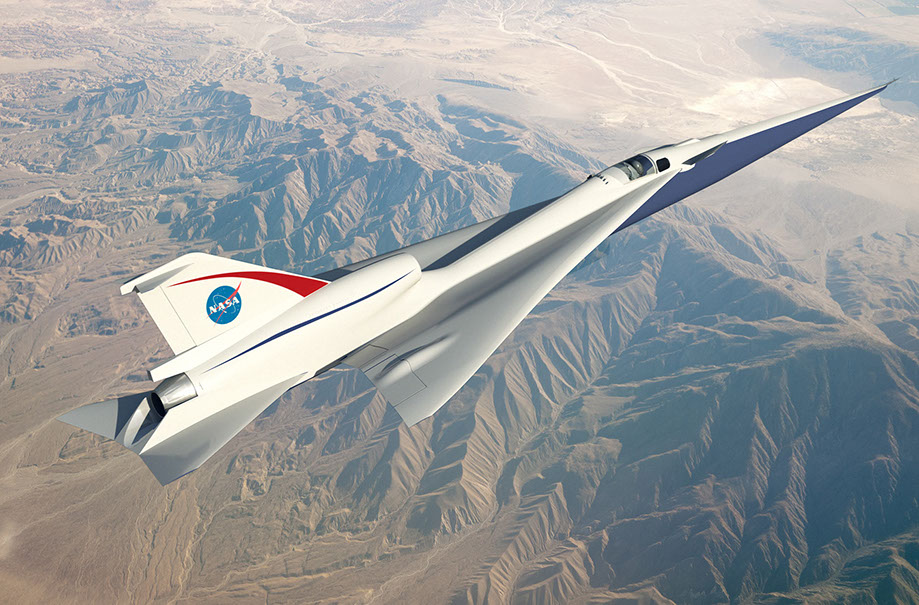There just might be a new supersonic jet on the horizon, if NASA and Lockheed Martin’s plans soon come true.
The first high-speed wind tunnel tests at NASA’s Glenn Research Center in Cleveland are set to begin to see if the Quiet Supersonic Technology (QueSST) X-plane preliminary design is ready, ECN reports.
NASA is testing a 9% scale model of the new X-plane design in the Supersonic Wind Tunnel. For the next eight weeks, engineers will put the plane through some high winds in order to understand if the plane’s aerodynamics will hold up, and to see if its propulsion system holds up. The agency believes that the QueSST X-plane will soon be the first in many highly advanced planes that will open doors in supersonic flight.
Ray Castner, leader of NASA’s efforts, says,
We’ll be measuring the lift, drag and side forces on the model at different angles of attack to verify that it performs as expected. We also want to make sure the air flows smoothly into the engine under all operating conditions.
David Stark, facility manager, adds, “We need to see how the design performs from just after takeoff, up to cruising at supersonic speed, back to the start of the landing approach. The 8’ x 6’ supersonic wind tunnel allows us to test that sweet spot range of speeds all in one wind tunnel.”
The wind tunnel is specifically suited for the test because of its size, and its ability to create high wind speeds.
Peter Losifidis, QueSST program manager at Lockheed Martin Skunk Works, says, “Our unique aircraft design is shaped to separate the shocks and expansions associated with supersonic flight, dramatically reducing the aircraft’s loudness.” Research has shown that supersonic airplanes are possible if they are shaped in a certain way.
“Our design reduces the airplane’s noise signature to more of a ‘heartbeat’ instead of the traditional sonic boom that’s associated with current supersonic aircraft in flight today,” Losifidis says.
Dave Richwine, NASA’s QueSST preliminary design project manager, further explains, “This test is an important step along the path to the development of an X-plane that will be a key capability for the collection of community response data required to change the rules for supersonic overland flight.”
The QueSST is one of the first in NASA’s New Aviation Horizons (NAH) Initiative that is looking into reducing fuel use, emissions and noise pollution.
























